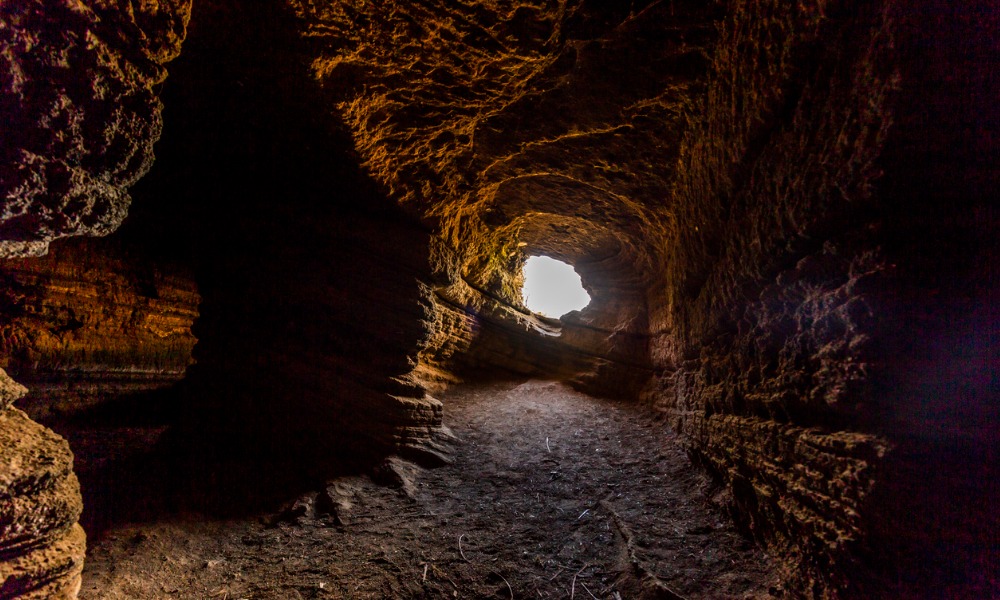New EQC-funded research seeks to tackle Auckland lava caves

New EQC-funded research seeks to tackle Auckland lava caves | Insurance Business New Zealand
Catastrophe & Flood
New EQC-funded research seeks to tackle Auckland lava caves
The region’s landscape comprises more than 50 volcanoes and hundreds of lava caves
Catastrophe & Flood
By
Kenneth Araullo
In Auckland, homeowners and developers are uncovering about one new lava cave each month within the Auckland Volcanic Field (AVF), prompting a significant research initiative from the Toka Tū Ake EQC and Auckland Council to compile a comprehensive database of both historical records and recent findings.
This research project, spearheaded by DEVORA (Determining Volcanic Risk In Auckland), aims to enhance understanding of the locations of these lava caves to facilitate safer future developments without harming these unique geological features. Funded by Toka Tū Ake EQC and Auckland Council, DEVORA has been a key contributor to volcanic risk research in the region.
According to a news release, Jaxon Ingold from Waipapa Taumata Rau/University of Auckland has been tasked by DEVORA researchers to gather existing data on the city’s numerous lava caves and assist in developing a system for sharing this information with relevant stakeholders.
Ingold notes the challenge in collating precise information about the caves, which is currently dispersed across various groups, including local iwi, the council, and specialists who have been exploring and charting parts of this underground network.
Auckland’s landscape, comprising 53 volcanoes and hundreds of lava caves, some extending up to 290m, represents a rare global phenomenon. Ingold explains that the formation of these caves depends on specific conditions, such as the type of lava and the velocity of its flow.
Establishing a database for lava caves
Kate Lewis and Christina Bloom, geoheritage experts at Auckland Council, and speleologist Peter Crossley are working closely with Ingold on this project. Their primary objective is to establish a database of known and newly discovered lava caves. This resource will be invaluable for planners, engineers, and other relevant professionals, aiding in the protection of these caves and enhancing understanding of lava flows in Tāmaki Makaurau.
When new lava caves are identified, they are reported to the council. The team documents these caves and explores solutions to complete planned works while minimising disturbances to the caves. Lewis encouraged Auckland residents to report any new caves, assuring that sensitive information will be handled appropriately.
Lava caves hold significant cultural and spiritual importance to Māori. Even those never accessible before discovery can be of substantial cultural relevance. Ingold emphasised the importance of collaborating with local iwi to understand these sites better, noting the sensitive nature of some cave locations.
Jo Horrocks, chief resilience and research officer at Toka Tū Ake EQC, said that their investment in DEVORA’s research is aimed at gaining a deeper understanding of all aspects of the Auckland Volcanic Field, including the lava caves. This project provides vital geological and geoheritage insights, aiding in planning and development of future housing and infrastructure.
Lewis said that many lava caves, due to their cultural, historical, and geological significance, are designated as Outstanding Natural Features under the Auckland Unitary Plan. All newly discovered lava caves exceeding one metre in width are subject to investigation and potential protection, similar to archaeological sites.
The team works diligently to respond to reports of new caves during construction projects, seeking ways to continue the work with necessary modifications. This includes developing construction methodologies to minimise vibration and careful work around the caves, often involving geotechnical engineers to design structures safely over and around the caves. Efforts are made to streamline this process, balancing the need to protect the caves with the swift resumption of construction activities.
What are your thoughts on this story? Please feel free to share your comments below.
Related Stories
Keep up with the latest news and events
Join our mailing list, it’s free!






